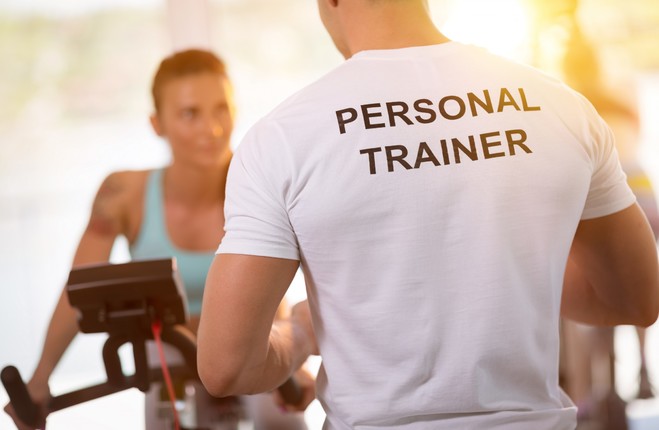INFORMATION OVERLOAD IS a massive problem in the fitness world.
Getting fit and staying fit has never been so confusing. Our clients tell us all the time that before us, they never knew what worked, what didn’t, what exercises they should be doing and how often they should do them.
Personal trainers help their clients set obtainable goals, create a training schedule that fits into the client’s busy schedule, provide accountability, motivational support, assistance on meal plans and diet as well as exercise prescription and instruction.
Personal trainers are an incredible resource but we can be an expensive one. While hiring a trainer to work out the details for you may be the easiest option, some prefer to strike out on their own.
If you enjoy the freedom of setting your own training or if personal training is just not financially viable then keep reading.
Along with a little planning, some research and these five tips we have put together, you will know everything you need to know to become your very own personal trainer.
1. Set a smart goal
We are completely goal centered at SMART Training. Every client that walks through our doors has a personal goal. Through our consultation process we flesh out the client’s goal to ensure that it is specific, measurable, achievable, realist and timely (smart).
The power of a goal is not always reaching it, but having something to train towards.
The process of chasing a powerful goal is the driving factor behind real success. Ask yourself the following; What exactly do I want to achieve by working out more? Feel comfortable wearing my swimsuit on holidays this summer? To look ripped and feel strong? Be able to run a marathon in five hours? Drop body fat percentage? Move better? Be pain free?
Once you have a goal in place, ask yourself whether it is specific, measurable, achievable, realistic and timely. ‘I want to run more and feel fitter’ is not a smart goal but ‘I want to complete a 10k race in the next 10 months’ is.
This is the first thing we speak to clients about when they come to us; after all what’s the purpose of training if you don’t have a goal to motivate you? So pull up a chair, grab a pen and paper and start writing your smart goals.
2. Proper preparation prevents poor performance
First ask yourself a few vital questions. Where do you enjoy working out; inside or outside? What time do you like to workout at; mornings, lunchtimes or evening?
How often can you train per week? How much time can you spend daily on exercise or training? What are the best days for you to exercise?
The answers to these questions will guide your workout schedule. Make your schedule as convenient as possible to ensure that you have no excuses to doss off.
Try to schedule some form of exercise or movement on the days when you are not training as well as scheduling it around your lifestyle.
Put this training schedule into your diary so you definitely can’t forget about it. You will also need to create a meal plan around the foods you enjoy.
We suggest sitting down on Sunday evening and creating a meal plan for the week ahead (including options for snacks).
When do you do your weekly shop, be strict with yourself and only buy what is on the meal planner for that week. Again put your meal plan up somewhere you will see it every day.
3. Design your workouts
Two to three strength and conditioning training sessions per week is plenty for those that are new to training.
Pairing this with a short cardio session one to two times a week will significantly help to improve your body composition, performance and health.
If you are new to training, full body training is the best way to see results as you will be training the major muscle groups rather than spending an entire session training your biceps and triceps.
Given that your entire body is training during each session, you will see greater muscle strength and burn more calories.
There are an abundance of videos and articles online if you are looking for inspiration to assist you with creating your specific programme.
Try to keep your workout simple, focusing on exercises like squats, deadlifts, pull-ups, push-ups, lunges and rows.
Obviously if you are more advanced, create a workout that targets different muscle groups in each workout, depending on your goals.
4. Improve your diet
Training hard and smart is really important but so is good nutrition. There is no reason to overhaul your diet completely or give up the foods you love entirely.
You do however need to make adjustments to control your calorie intake, your portion size and ensure that you are getting enough protein, carbohydrates, fruit and vegetables and good fats into your diet.
Your diet should consist of lean protein like chicken, turkey or fish to support muscle repair, carbohydrates like sweet potatoes, whole grain pasta or rice for energy recuperation, fruits and vegetables to aid in overall health and digestion and healthy fats like nuts, nut butter and avocados to support proper hormone levels.
Allow yourself one cheat day a week and really enjoy it, after all this is a lifestyle choice rather than a fad diet.
Remember that staying hydrated and having a well-balanced diet is going to aid just as much in your progress towards reaching that goal as your workout in the gym.
5. Stay motivated and track your progress
We find that the best way to stay motivated and to hit your goal is to track your progress.
Record your basic weight, circumference measurements and skinfold body-fat measurements every month.
That will give you a much clearer picture as to where you are and how far you have to go.
If you have other measurable goals in mind, like increasing the weight of your squat or deadlift or perhaps losing inches off your thighs, record where you are currently at with these also.
Get yourself re-measured four to six weeks later. When you hit the gym, bring a notebook and pen with your workouts pre-written.
Track your lifts and endeavour to increase the weight each week by small amounts. A notebook is vital to recording your small wins and small wins in quick succession can equal great changes.
You will begin to see progress which can only reinforce your motivation to keep pushing forward.
Check out more from SMART Training on their website or on Facebook and Twitter.
The42 is on Snapchat! Tap the button below on your phone to add!






